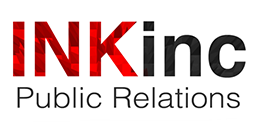By Dick Grove
Let’s get something clear from the very beginning…public relations has been offered under the compensation banner of ‘Pay-for-Performance’ for over a hundred years. There is nothing new or revolutionary about charging after-the-fact for actual publicity results. Ivy Lee, considered one of the fathers of PR, did it when he wrote arguably the first press release in the early 1900’s. It was only after it was published, did he send his client a bill. I personally have been practicing this compensation model since I founded INK PR nearly thirty years ago – charging for results and not by the hour. Yet seldom does a week go by when first presenting this option to a new client, that they are not surprised to learn of its existence. And even if they have heard the term, “Pay-for-Performance,” or P4P, it is often in a negative connotation.
So it’s time to clear up the four most common misconceptions about Pay-for-Performance…
First – Pay-for-Performance is not “real PR,” it’s ambulance chasing for publicity hits looking for a quick buck by publicists, not PR professionals who offer a full range of services in the more traditional PR firms. After all, real PR professionals provide consulting services, and sometimes even digital marketing services, to make sure all the client’s needs are met.
True…and not true.
True, traditional PR firms (sometimes now under the guise of the name marketing firms) offer a lot of services, but always under a large retainer based on inflated hourly rates. And also true, is the fact that many, if not most, of these extra services are unnecessary to what the client has actually hired them for – solid, consistent earned media placements.
Not true in that even P4P PR firms offer additional services including crisis management, digital marketing, media training, et.al., but under a separate add-on fee, and only at the client’s request and approval – fully transparent to all.
Second – Pay-for- Performance PR is unethical and against the PRSA code of conduct about guaranteeing results.
Not true.
Pay-for-Performance does not guarantee any earned media placement, ever. Too many times, the PRSA code is waved in the face of Pay-for-Performance firms by traditional firms like gospel – without ever reading the PRSA manual. There is no mention in the current PRSA code of ethics stating anything about guaranteeing specified results. None. But more importantly, P4P does not guarantee specific results. What P4P does guarantee is the client will not have to pay unless there are results. Big difference.
Third – Pay-for Performance means the client will have to pay for every media placement that occurs, targeted to their specific market audience or not – whether the result of a targeted pitch or a mass distributed press release. The client has no control and is going to see a big bill for a whole lot of low hanging fruit. After all, the P4P agency is being paid for quantity, not quality.
Again, not true. The reputable PR firm works with its client to design a media target list which best meets their communication goals, including the cost if successful. This media target list and the client’s overall budget must be approved and signed by the client before any outreach begins. The client is in control from the beginning and informed throughout the process.
Fourth – Pay-for-Performance will be cheaper than traditional retainer or hourly fee PR firms.
Not necessarily. The quality and consistency of solid earned media coverage in the media targeted and approved by the client may over time cost the same as those fat retainers and hourly fees. The great differentiator of course, that cost is directly tied to real earned media results, not just effort and an invoice.
